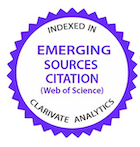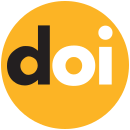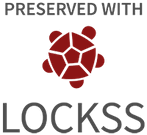Scanning electron microscopic investigation of dentinal tubules in Cebus apella DENTIN
Palavras-chave:
Morfologia AnimalResumo
The aim of the study was to investigate the number and diameter of the Cebus apella dentinal tubules. The roots of the Cebus apella teeth were examined in specific tooth locations: the apical, middle and cervical dentin. The calculations were based on the scanning electron microscope photographs of the fractured surfaces. The results showed that the average number of dentinal tubules for each location was: 74,800 tubules/mm2 for apical root dentin, 90,000 tubules/mm2 for mid-root dentin, 91,600 tubules/mm2 for cervical root dentin. The average diameter was the following: apical root dentin, 4,30µm; mid-root dentin, 4,37µm; cervical root dentin, 5,23µm. These findings demonstrate that the Cebus apella teeth are a suitable substitute for human in endodontics studies.KEY WORDS: Dentin, dentinal tubules, teeth.
Downloads
Não há dados estatísticos.
Publicado
2009-12-20
Como Citar
LIMA, Rafael Rodrigues; ARAÚJO, Leila Marques; AFFONSO, Priscilla Rocha; MARANHÃO, Kalena Melo; ANTONIAZZI, João Humberto; LAMARÃO, Suely Santos. Scanning electron microscopic investigation of dentinal tubules in Cebus apella DENTIN. Ciência Animal Brasileira / Brazilian Animal Science, Goiânia, v. 10, n. 4, p. 1328–1331, 2009. Disponível em: https://revistas.ufg.br/vet/article/view/1128. Acesso em: 26 dez. 2025.
Edição
Seção
Nota Científica
Licença
Copyright (c) 2009 Ciência Animal Brasileira / Brazilian Animal Science

Este trabalho está licenciado sob uma licença Creative Commons Attribution 4.0 International License.
Autores que publicam nesta revista concordam com os seguintes termos:
- Autores mantém os direitos autorais e concedem à revista o direito de primeira publicação, com o trabalho simultaneamente licenciado sob a Licença Creative Commons Attribution que permite o compartilhamento do trabalho com reconhecimento da autoria e publicação inicial nesta revista.
- Autores têm autorização para assumir contratos adicionais separadamente, para distribuição não-exclusiva da versão do trabalho publicada nesta revista (ex.: publicar em repositório institucional ou como capítulo de livro), com reconhecimento de autoria e publicação inicial nesta revista.
- Autores têm permissão e são estimulados a publicar e distribuir seu trabalho online (ex.: em repositórios institucionais ou na sua página pessoal) a qualquer ponto antes ou durante o processo editorial, já que isso pode gerar alterações produtivas, bem como aumentar o impacto e a citação do trabalho publicado (Veja O Efeito do Acesso Livre).


























